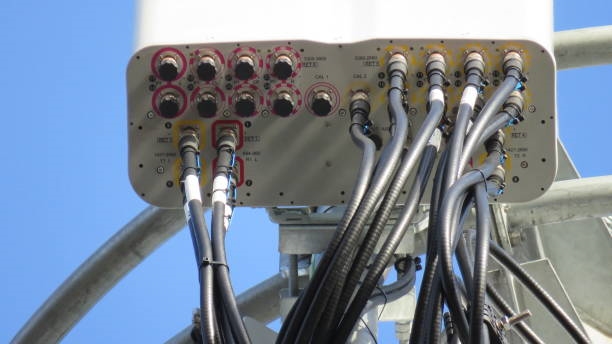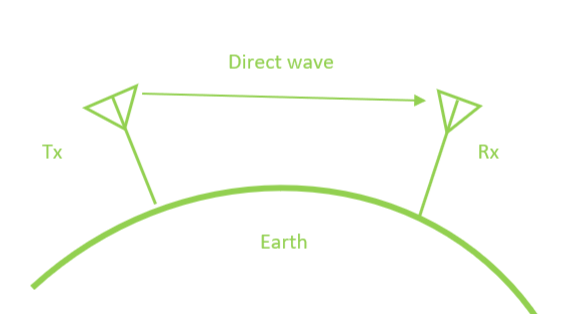Terahertz (THz) technology, recognized as one of the top ten transformative technologies, is a focal point of global research due to its exceptional performance in applications such as space science, passive remote sensing, security detection, biomedical imaging, and astronomical observation. This article explores the fundamentals of terahertz waves and their significant potential in communication systems, providing insights for hardware engineers, PCB designers, and electronics enthusiasts.
Understanding Terahertz Waves
Terahertz waves are electromagnetic waves situated between microwaves and short-wave infrared in the electromagnetic spectrum, typically defined as frequencies from 0.1 to 10 THz, corresponding to wavelengths of 3 mm to 30 ¦Ìm. In some contexts, the range is narrowed to 0.3¨C3 THz, while a broader definition may extend to 100 THz. In electronics, these waves are referred to as millimeter and submillimeter waves, while in optics, they are known as far-infrared radiation.
Terahertz waves are ubiquitous in nature, as most objects emit thermal radiation in this frequency range. Historically, the lack of efficient sources and sensitive detectors left this spectrum underexplored, earning it the term "THz Gap." Advances in optoelectronics and semiconductor technologies have since accelerated terahertz research, bridging this gap.
The unique position of terahertz waves in the spectrum necessitates research from both electromagnetic (long-wave) and optical (short-wave) perspectives, as their physical properties differ significantly from those of lower-frequency microwaves and higher-frequency optical waves.
- Electromagnetic Perspective: Low-frequency electromagnetic wave generation relies on macroscopic charge motion. At terahertz frequencies, effects like stray capacitance, negligible at lower frequencies, become significant. Traditional electromagnetic sources and electronic components are inadequate, requiring faster, smaller-scale electronic devices.
- Optical Perspective: Optical waves result from quantum electron transitions. Terahertz photon energy, corresponding to millielectronvolt-level transitions, is smaller than the energy of most crystal lattice optical phonons, making it susceptible to thermal relaxation effects. Efficient terahertz sources must mitigate these effects.
For low-frequency electromagnetic waves, the wavelength is typically larger than device dimensions, allowing the electromagnetic field to be treated as uniformly distributed. In contrast, optical device dimensions exceed the wavelength, requiring the medium to be considered uniform over the optical wavelength. Terahertz waves, falling between these regimes, demand a hybrid approach combining electromagnetic and optical principles, which historically contributed to the THz Gap.
Terahertz in Wireless Communications
Compared to millimeter waves used in 5G, terahertz waves offer significantly wider bandwidth, enabling data transmission rates exceeding 100 Gbit/s. Their narrower beams provide better directionality and stronger interference resistance. Additionally, their shorter wavelengths facilitate device miniaturization. Unlike optical communications, terahertz waves are unaffected by ambient light noise and perform well in adverse conditions like fog or dust, combining high capacity, security, and penetration capabilities.
These advantages position terahertz as a leading candidate for 6G communications. At the 2019 World Radiocommunication Conference (WRC-19), 137 GHz of bandwidth (275¨C296 GHz, 306¨C313 GHz, 318¨C333 GHz, and 356¨C450 GHz) was allocated for unrestricted fixed and land-mobile services, marking the first designation of terahertz spectrum above 275 GHz for active terrestrial radio applications, with the upper limit extended to 450 GHz.
Applications in 6G Communications
6G envisions ubiquitous connectivity and digital twins, with terahertz technology serving as a critical interface for various communication scenarios.
Terrestrial Communications: Terahertz enables ultra-high-speed wireless scenarios, such as holographic communications, integrated sensing and communication, virtual reality, augmented reality, and metaverse applications requiring massive data transfers. Similar to 5G¡¯s fixed wireless access, terahertz can complement millimeter-wave systems. Its high-speed capabilities also support wireless backhaul, reducing the cost and complexity of fiber deployment, particularly in challenging environments like rivers, deserts, or mountains. Additionally, terahertz can enable wireless data centers, minimizing deployment space and costs.
Integrated Sensing and Communications: Terahertz¡¯s high resolution and penetration make it ideal for applications combining sensing and communication, such as environmental monitoring or autonomous systems.
Space and Integrated Sensing Networks: Terahertz waves experience near-lossless propagation in outer space, enabling long-distance signal transmission. By deploying terahertz communication systems on space-based platforms (satellites) or aerial platforms (drones, airships), seamless connectivity across space, air, sea, and remote terrestrial regions can be achieved, supporting integrated space-air-ground-sea networks.
Future Prospects and Miniaturization
Ongoing advancements in terahertz technology promise system miniaturization, with devices potentially reaching micro- or nanoscale dimensions. Combined with progress in manufacturing processes, this enables on-chip wireless communication between nodes. Emerging materials and technologies also open possibilities for in-body local area networks, supporting applications like biomedical monitoring.
In the context of global technological competition, terahertz technology is strategically significant for China, offering a pathway to leadership in next-generation communications and reducing reliance on foreign technologies.
 ALLPCB
ALLPCB







